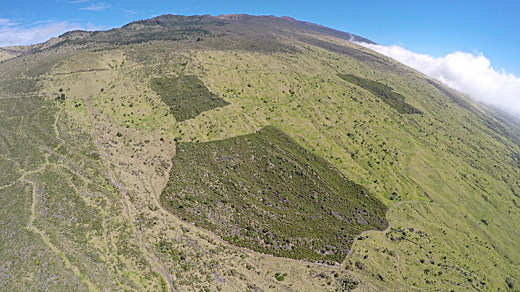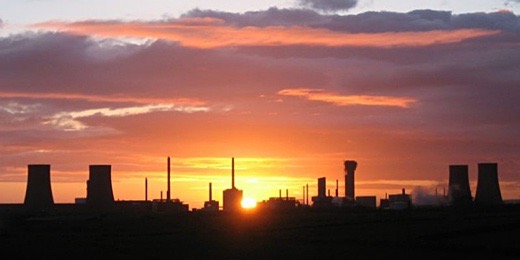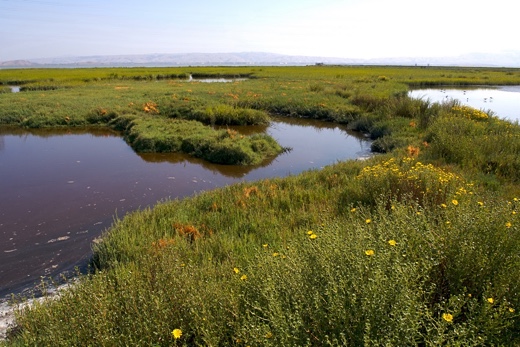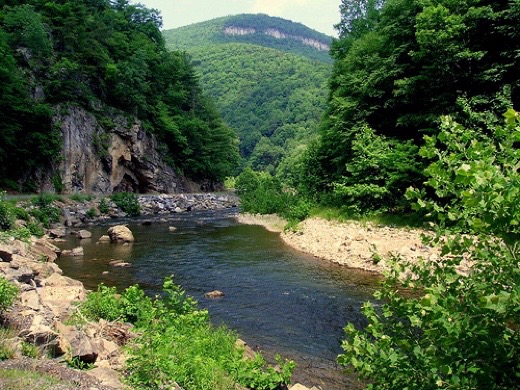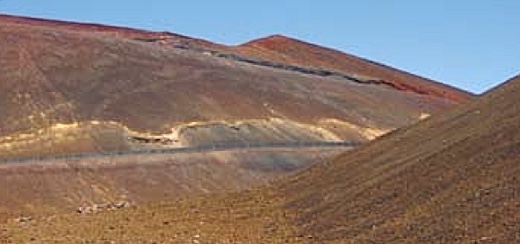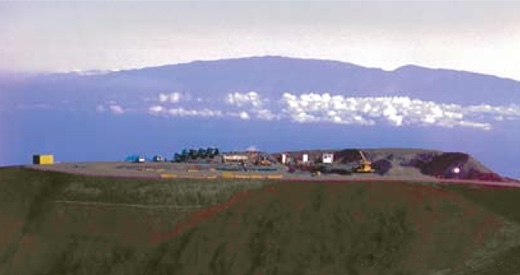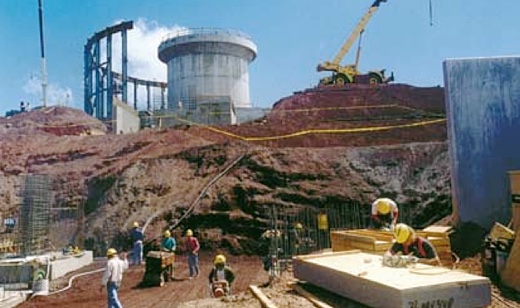SUBHEAD: A reduction of 75% in energy use could stay within the carrying capacity of the planet.
By Kris De Decker on 8 January 2018 in Low Tech Magazine -
(http://www.lowtechmagazine.com/2018/01/how-much-energy-do-we-need.html)
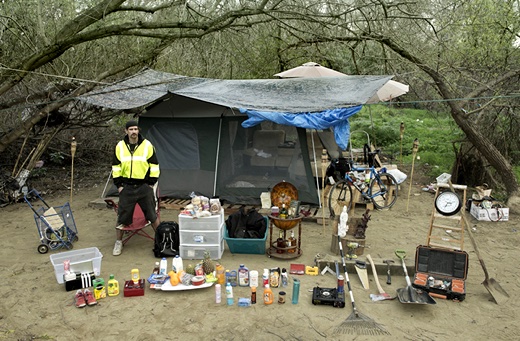
Image above: John Marshall is 50 years old and live on the beach in San Jose, California. He was once a cell phone engineer. From original article.
Because energy fuels both human development and environmental damage, policies that encourage energy demand reduction can run counter to policies for alleviating poverty, and the other way around. Achieving both objectives can only happen if energy use is spread more equally across societies.
However, while it’s widely acknowledged that part of the global population is living in ‘energy poverty’, there’s little attention given to the opposite condition, namely ‘energy excess’ or ‘energy decadence’. Researchers have calculated minimum levels of energy use needed to live a decent life, but what about maximum levels?
Targets for reductions in carbon emissions and energy use are usually framed in terms of national and international percentage reductions, but the energy use per head of the human population varies enormously between and within countries, no matter how it is calculated. [2]
If we divide total primary energy use per country by population, we see that the average North American uses more than twice the energy of the average European (6,881 kgoe versus 3,207 kgoe, meaning kilograms of oil equivalent).
Within Europe, the average Norwegian (5,818 kgoe) uses almost three times more energy than the average Greek (2,182 kgoe).
The latter uses three to five times more energy than the average Angolan (545 kgoe), Cambodian (417 kgoe) or Nicaraguan (609 kgoe), who uses two to three times the energy of the average Bangladeshi (222 kgoe). [3]
These figures include not only the energy used directly in households, but also energy used in transportation, manufacturing, power production and other sectors. Such a calculation makes more sense than looking at household energy consumption alone, because people consume much more energy outside their homes, for example through the products that they buy. [4]

Image above: Chart of per capita energy consumption in the equivalent of kilograms of oil. For North America the average consumption per person is over 2,000 gallons of petroleum oil. From original article.
Such a 'production-based' calculation is not perfect, because countries with high energy use per capita often import a lot of manufactured goods from countries with lower energy use per capita. The energy used in the production of these goods is attributed to the exporting countries – meaning that the energy use per capita in the most ‘developed’ countries is an underestimation.
Finding out about the distribution of energy use within countries requires data with higher spatial resolution. For example, an analysis of variations in household energy consumption (electricity + gas) and energy use in private transportation in the UK shows that the average energy use per capita can differ fivefold depending on the area. [2]
Taking into account both differences between and within countries, as well as the outsourcing of manufacturing (a ‘consumption-based’ calculation), the highest energy users worldwide can contribute 1,000 times as much carbon emissions as the lowest energy users. [5]
In 2011, the United Nations and the World Bank launched the Sustainable Energy for All (SE4ALL) initiative, which aims to “ensure universal access to modern energy services” by 2030. Energy poverty has also gained attention in developed countries, where it is mainly focused on inadequate space heating.
A 2015 study found that up to 54 million Europeans are not able to adequately heat their homes in winter. [9]
The European Commission launched the Energy Poverty Observatory in 2017, which will conduct research and provide guidelines to national governments for setting up measures to address fuel poverty. [8]
Bringing the rest of the world up to the living standards and energy use of rich countries is not compatible with the environmental problems we face.
However, while it’s recognized that part of the global population is using not enough energy, there is not the same discussion of people who are using too much energy. [2] [10] [11]
Nevertheless, solving the tension between demand reduction and energy poverty can only happen if those who use ‘too much’ reduce their energy use. Bringing the rest of the world up to the living standards and energy use of rich countries – the implicit aim of ‘human development’ – would solve the problem of inequality, but it’s not compatible with the environmental problems we face.
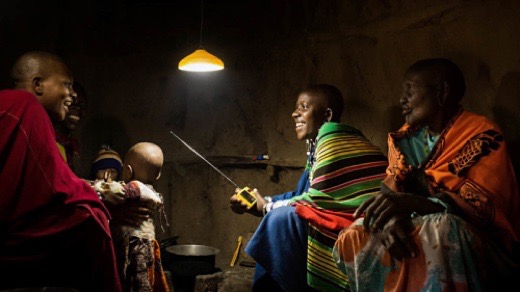
Image above: Most families living in rural off-grid areas of Africa use dim kerosene lamps to light their homes at night. Even a modest solar PV panel can provide enough light for socialization and doing school homework. From original article.
Based on the figures given above, if every human on Earth would use as much energy as the average Western European or North American, total world energy use and carbon emissions would be at least two to four times higher than they are today. This is an underestimation, because to achieve the same living standards developing countries first need to build an infrastructure – roads, electricity grids, et cetera – to make this possible, which also requires a lot of energy. [12]
Consequently, whilst much work has been done around fuel poverty, there is a parallel debate to be had about ‘energy decadence’ or ‘energy excess’. [2]
The quest for ‘energy sufficiency’ – a level of energy use that is both fair and sustainable – should involve not only ‘floors’ (enough for a necessary purpose) but also ‘ceilings’ (too much for safety and welfare, in the short or long term). [13]
Otherwise, we would be mortgaging the health of future generations to realize development gains in the present. [14]
For example, the Millenium Project of the UN Development Program establishes a minimum level of 500 kgoe per person per year – an amount of energy that is almost four times below the world average. [15]
Some researchers have addressed energy decadence in a similar way, calculating a maximum acceptable standard of living. For example, the Swiss Federal Institute of Technology proposed the 2,000 watt society, which implies a worldwide energy use per capita of per 1,500 kgoe per year, while the Global Commons Institute’s Contraction and Convergence proposal limits energy use to 1,255 kgoe per person per year. [10][13][16]
These levels of energy use per capita correspond to a reduction of 20-35% below the world average today.
Because energy poverty research only investigates ‘floors’ and not ‘ceilings’ of energy use, minimum energy levels are calculated from the bottom-up. Researchers investigate how much energy is required to live a decent life, based on a set of goods and services that are considered essential.
On the other hand, maximum energy levels – above which energy use is considered to be excessive and unsustainable – are calculated from the top down. Researchers determine a ‘safe’ level of global energy use based on some indicator of the carrying capacity of the planet – such as a level of carbon emissions that is thought to keep global warming within certain limits – and divide it by the world population.
Between the upper boundary set by the carrying capacity of the planet, and a lower boundary set by decent levels of wellbeing for all lies a band of sustainable energy use, situated somewhere between energy poverty and energy decadence. [14]
These boundaries not only imply that the rich lower their energy use, but also that the poor don’t increase their energy use too much. However, there is no guarantee that the maximum levels are in fact higher than the minimum levels.
Between the upper boundary set by the carrying capacity of the planet, and a lower boundary set by decent levels of wellbeing for all lies a band of sustainable energy use.
When a minimum level of energy use is calculated from the bottom-up, it remains to be seen if this level can be maintained without destroying the environment. On the other hand, if a maximum level of energy use per capita is calculated from the top down, it remains to be seen if this ‘safe’ level of energy use is sufficient to live a decent life. If the ‘floor’ is higher than the ‘ceiling’, the conclusion would be that sustainable wellbeing for all is simply impossible.
To make matters worse, defining minimum and maximum levels is fraught with difficulty. On the one hand, when calculating from the top down, there’s no agreement about the carrying capacity of the planet, whether it concerns a safe concentration of carbon in the atmosphere, the remaining fossil fuel reserves, the measurements of ecological damage, or the impact of renewable energy, advances in energy efficiency, and population growth.
On the other hand, for those taking a bottom-up approach, defining what constitutes a ‘decent’ life is just as debatable.
The amount of energy that people ‘need’ is not only up to them. It also depends on the climate (people living in cold climates will require more energy for heating than those living in warm climates), the culture (the use of air conditioning in the US versus the siesta in Southern Europe), and the infrastructure (cities that lack public transport and cycling facilities force people into cars).
Differences in energy efficiency can also have a significant impact on the “need” for energy. For example, a traditional three-stone cooking fire is less energy efficient than a modern gas cooking stove, meaning that the use of the latter requires less energy to cook a similar meal.
It’s not only the appliances that determine how much energy is needed, but also the infrastructure: if electricity production and transmission have relatively poor efficiency, people need more primary energy, even if they use the same amount of electricity at home.

Image above: It does not take a great deal of money or technical skill to transform the most isolated places with independent of grid electricity. From original article.
To account for all these differences, most researchers approach the diagnosis of energy poverty by focusing on ‘energy services’, not on a particular level of energy use. [17]
People do not demand energy or fuel perse – what they need are the services that energy provides.
For example, when it comes to lighting, people do not need a particular amount of energy but an adequate level of light depending on what they are doing.
An example of this service-based approach is NGO Practical Action’s Total Energy Access (TEA) indicator, which was launched in 2010. [17][18]
The TEA measures households in developing countries against prescribed minimum services standards for lighting, cooking and water heating, space heating, space and food cooling, and information and communication services.
For example, the minimum level for lighting in households is 300 lumens, and Practical Action provides similar standards for other energy services, not only in households but also in work environments and community buildings.
Needs are universal, objective, non-substitutable, cross-generational, and satiable. Wants are subjective, evolving over time, individual, substitutable and insatiable.
Some energy poverty indicators go one step further still. They don’t specify energy services, but basic human needs or capabilities (depending on the theory). In these modes, basic needs or capabilities are considered to be universal, but the means to achieve them are considered geographically and culturally specific. [10] [17]
The focus of these needs-based indicators is on measuring the conditions of human well-being, rather than on specifying the requirements for achieving these outcomes. [19]
Examples of human basic needs are clean water and nutrition, shelter, thermal comfort, a non-threatening environment, significant relationships, education and healthcare.
Basic needs are considered to be universal, objective, non-substitutable (for example, insufficient food intake cannot be solved by increasing dwelling space, or the other way around), cross-generational (the basic needs of future generations of humans will be the same as those of present generations), and satiable (the contribution of water, calories, or dwelling space to basic needs can be satiated).
This means that thresholds can be conceived where serious harm is avoided. ‘Needs’ can be distinguished from ‘wants’, which are subjective, evolving over time, individual, substitutable and insatiable.
Focusing on basic needs in this way makes it possible to distinguish between ‘necessities’ and ‘luxuries’, and to argue that human needs, present and future, trump present and future ‘wants’. [14][17]
These energy service levels could then be combined to calculate maximum energy use levels per capita or household. However, these would be valid only in specific geographical and cultural contexts, such as countries, cities, or neighborhoods – and not universally applicable. Likewise, we could define basic needs and then calculate the energy that is required to meet them in a specific context.
However, the focus on energy services or basic needs also reveals a fundamental problem. If the goods and services necessary for a decent life free from poverty are seen not as universally applicable, but as relative to the prevailing standards and customs of a particular society, it becomes clear that such standards evolve over time as technology and customary ways of life change. [11]
Change over time, especially since the twentieth century, reveals an escalation in conventions and standards that result in increasing energy consumption. The ‘need satisfiers’ have become more and more energy-intensive, which has made meeting basic needs as problematic as fulfilling ‘wants’.
Energy poverty research in industrial countries shows that the minimum energy level required to meet basic needs is constantly on the rise. [11][20][21]
What is sufficient today is not necessarily sufficient tomorrow. For example, several consumer goods which did not exist in the 1980s, such as mobile phones, personal computers, and internet access, were seen as absolute necessities by 40-41% of the UK public in 2012. [20]
By Kris De Decker on 8 January 2018 in Low Tech Magazine -
(http://www.lowtechmagazine.com/2018/01/how-much-energy-do-we-need.html)

Image above: John Marshall is 50 years old and live on the beach in San Jose, California. He was once a cell phone engineer. From original article.
Because energy fuels both human development and environmental damage, policies that encourage energy demand reduction can run counter to policies for alleviating poverty, and the other way around. Achieving both objectives can only happen if energy use is spread more equally across societies.
However, while it’s widely acknowledged that part of the global population is living in ‘energy poverty’, there’s little attention given to the opposite condition, namely ‘energy excess’ or ‘energy decadence’. Researchers have calculated minimum levels of energy use needed to live a decent life, but what about maximum levels?
Energy Use Per Capita
Humanity needs to reduce its energy use radically if we are to avoid dangerous climate change, the exhaustion of non-renewable resources, and the destruction of the natural environment upon which our survival depends. [1]Targets for reductions in carbon emissions and energy use are usually framed in terms of national and international percentage reductions, but the energy use per head of the human population varies enormously between and within countries, no matter how it is calculated. [2]
If we divide total primary energy use per country by population, we see that the average North American uses more than twice the energy of the average European (6,881 kgoe versus 3,207 kgoe, meaning kilograms of oil equivalent).
Within Europe, the average Norwegian (5,818 kgoe) uses almost three times more energy than the average Greek (2,182 kgoe).
The latter uses three to five times more energy than the average Angolan (545 kgoe), Cambodian (417 kgoe) or Nicaraguan (609 kgoe), who uses two to three times the energy of the average Bangladeshi (222 kgoe). [3]
These figures include not only the energy used directly in households, but also energy used in transportation, manufacturing, power production and other sectors. Such a calculation makes more sense than looking at household energy consumption alone, because people consume much more energy outside their homes, for example through the products that they buy. [4]
Image above: Chart of per capita energy consumption in the equivalent of kilograms of oil. For North America the average consumption per person is over 2,000 gallons of petroleum oil. From original article.
Such a 'production-based' calculation is not perfect, because countries with high energy use per capita often import a lot of manufactured goods from countries with lower energy use per capita. The energy used in the production of these goods is attributed to the exporting countries – meaning that the energy use per capita in the most ‘developed’ countries is an underestimation.
Finding out about the distribution of energy use within countries requires data with higher spatial resolution. For example, an analysis of variations in household energy consumption (electricity + gas) and energy use in private transportation in the UK shows that the average energy use per capita can differ fivefold depending on the area. [2]
Taking into account both differences between and within countries, as well as the outsourcing of manufacturing (a ‘consumption-based’ calculation), the highest energy users worldwide can contribute 1,000 times as much carbon emissions as the lowest energy users. [5]
Inequality not only concerns the quantity of energy, but also its quality. People in industrialized countries have access to a reliable, clean and (seemingly) endless supply of electricity and gas.
On the other hand, two in every five people worldwide (3 billion people) rely on wood, charcoal or animal waste to cook their food, and 1.5 billion of them don’t have electric lighting. [6]
These fuels cause indoor air pollution, and can be time- and labour-intensive to obtain. If modern fuels are available in these countries, they’re often expensive and/or less reliable.
On the other hand, two in every five people worldwide (3 billion people) rely on wood, charcoal or animal waste to cook their food, and 1.5 billion of them don’t have electric lighting. [6]
These fuels cause indoor air pollution, and can be time- and labour-intensive to obtain. If modern fuels are available in these countries, they’re often expensive and/or less reliable.
Beyond Energy Poverty: Energy Decadence
It’s now widely acknowledged that these 3 billion people in the developing world are living in ‘energy poverty’. [7][8]In 2011, the United Nations and the World Bank launched the Sustainable Energy for All (SE4ALL) initiative, which aims to “ensure universal access to modern energy services” by 2030. Energy poverty has also gained attention in developed countries, where it is mainly focused on inadequate space heating.
A 2015 study found that up to 54 million Europeans are not able to adequately heat their homes in winter. [9]
The European Commission launched the Energy Poverty Observatory in 2017, which will conduct research and provide guidelines to national governments for setting up measures to address fuel poverty. [8]
Bringing the rest of the world up to the living standards and energy use of rich countries is not compatible with the environmental problems we face.
However, while it’s recognized that part of the global population is using not enough energy, there is not the same discussion of people who are using too much energy. [2] [10] [11]
Nevertheless, solving the tension between demand reduction and energy poverty can only happen if those who use ‘too much’ reduce their energy use. Bringing the rest of the world up to the living standards and energy use of rich countries – the implicit aim of ‘human development’ – would solve the problem of inequality, but it’s not compatible with the environmental problems we face.

Image above: Most families living in rural off-grid areas of Africa use dim kerosene lamps to light their homes at night. Even a modest solar PV panel can provide enough light for socialization and doing school homework. From original article.
Based on the figures given above, if every human on Earth would use as much energy as the average Western European or North American, total world energy use and carbon emissions would be at least two to four times higher than they are today. This is an underestimation, because to achieve the same living standards developing countries first need to build an infrastructure – roads, electricity grids, et cetera – to make this possible, which also requires a lot of energy. [12]
Consequently, whilst much work has been done around fuel poverty, there is a parallel debate to be had about ‘energy decadence’ or ‘energy excess’. [2]
The quest for ‘energy sufficiency’ – a level of energy use that is both fair and sustainable – should involve not only ‘floors’ (enough for a necessary purpose) but also ‘ceilings’ (too much for safety and welfare, in the short or long term). [13]
Otherwise, we would be mortgaging the health of future generations to realize development gains in the present. [14]
Calculating Energy Floors and Ceilings
How do we define energy decadence? How much is ‘too much’ energy use? To a large extent, we can build upon decades of research into energy poverty, which has measured the components of a minimum acceptable standard of living. [14]For example, the Millenium Project of the UN Development Program establishes a minimum level of 500 kgoe per person per year – an amount of energy that is almost four times below the world average. [15]
Some researchers have addressed energy decadence in a similar way, calculating a maximum acceptable standard of living. For example, the Swiss Federal Institute of Technology proposed the 2,000 watt society, which implies a worldwide energy use per capita of per 1,500 kgoe per year, while the Global Commons Institute’s Contraction and Convergence proposal limits energy use to 1,255 kgoe per person per year. [10][13][16]
These levels of energy use per capita correspond to a reduction of 20-35% below the world average today.
Because energy poverty research only investigates ‘floors’ and not ‘ceilings’ of energy use, minimum energy levels are calculated from the bottom-up. Researchers investigate how much energy is required to live a decent life, based on a set of goods and services that are considered essential.
On the other hand, maximum energy levels – above which energy use is considered to be excessive and unsustainable – are calculated from the top down. Researchers determine a ‘safe’ level of global energy use based on some indicator of the carrying capacity of the planet – such as a level of carbon emissions that is thought to keep global warming within certain limits – and divide it by the world population.
Between the upper boundary set by the carrying capacity of the planet, and a lower boundary set by decent levels of wellbeing for all lies a band of sustainable energy use, situated somewhere between energy poverty and energy decadence. [14]
These boundaries not only imply that the rich lower their energy use, but also that the poor don’t increase their energy use too much. However, there is no guarantee that the maximum levels are in fact higher than the minimum levels.
Between the upper boundary set by the carrying capacity of the planet, and a lower boundary set by decent levels of wellbeing for all lies a band of sustainable energy use.
To make matters worse, defining minimum and maximum levels is fraught with difficulty. On the one hand, when calculating from the top down, there’s no agreement about the carrying capacity of the planet, whether it concerns a safe concentration of carbon in the atmosphere, the remaining fossil fuel reserves, the measurements of ecological damage, or the impact of renewable energy, advances in energy efficiency, and population growth.
On the other hand, for those taking a bottom-up approach, defining what constitutes a ‘decent’ life is just as debatable.
Needs and Wants
The minimum and maximum levels of energy use mentioned above are meant to be universal: every world citizen is entitled to the same amount of energy. However, although distributing energy use equally across the global population may sound fair, in fact the opposite is true.The amount of energy that people ‘need’ is not only up to them. It also depends on the climate (people living in cold climates will require more energy for heating than those living in warm climates), the culture (the use of air conditioning in the US versus the siesta in Southern Europe), and the infrastructure (cities that lack public transport and cycling facilities force people into cars).
Differences in energy efficiency can also have a significant impact on the “need” for energy. For example, a traditional three-stone cooking fire is less energy efficient than a modern gas cooking stove, meaning that the use of the latter requires less energy to cook a similar meal.
It’s not only the appliances that determine how much energy is needed, but also the infrastructure: if electricity production and transmission have relatively poor efficiency, people need more primary energy, even if they use the same amount of electricity at home.

Image above: It does not take a great deal of money or technical skill to transform the most isolated places with independent of grid electricity. From original article.
To account for all these differences, most researchers approach the diagnosis of energy poverty by focusing on ‘energy services’, not on a particular level of energy use. [17]
People do not demand energy or fuel perse – what they need are the services that energy provides.
For example, when it comes to lighting, people do not need a particular amount of energy but an adequate level of light depending on what they are doing.
An example of this service-based approach is NGO Practical Action’s Total Energy Access (TEA) indicator, which was launched in 2010. [17][18]
The TEA measures households in developing countries against prescribed minimum services standards for lighting, cooking and water heating, space heating, space and food cooling, and information and communication services.
For example, the minimum level for lighting in households is 300 lumens, and Practical Action provides similar standards for other energy services, not only in households but also in work environments and community buildings.
Needs are universal, objective, non-substitutable, cross-generational, and satiable. Wants are subjective, evolving over time, individual, substitutable and insatiable.
The focus of these needs-based indicators is on measuring the conditions of human well-being, rather than on specifying the requirements for achieving these outcomes. [19]
Examples of human basic needs are clean water and nutrition, shelter, thermal comfort, a non-threatening environment, significant relationships, education and healthcare.
Basic needs are considered to be universal, objective, non-substitutable (for example, insufficient food intake cannot be solved by increasing dwelling space, or the other way around), cross-generational (the basic needs of future generations of humans will be the same as those of present generations), and satiable (the contribution of water, calories, or dwelling space to basic needs can be satiated).
This means that thresholds can be conceived where serious harm is avoided. ‘Needs’ can be distinguished from ‘wants’, which are subjective, evolving over time, individual, substitutable and insatiable.
Focusing on basic needs in this way makes it possible to distinguish between ‘necessities’ and ‘luxuries’, and to argue that human needs, present and future, trump present and future ‘wants’. [14][17]
Change over Time: Increasing Dependency on Energy
Focusing on energy services or basic needs can help to specify maximum levels of energy use. Instead of defining minimum energy service levels (such as 300 lumens of light per household), we could define maximum energy services levels (say 2,000 lumens of light per household).These energy service levels could then be combined to calculate maximum energy use levels per capita or household. However, these would be valid only in specific geographical and cultural contexts, such as countries, cities, or neighborhoods – and not universally applicable. Likewise, we could define basic needs and then calculate the energy that is required to meet them in a specific context.
However, the focus on energy services or basic needs also reveals a fundamental problem. If the goods and services necessary for a decent life free from poverty are seen not as universally applicable, but as relative to the prevailing standards and customs of a particular society, it becomes clear that such standards evolve over time as technology and customary ways of life change. [11]
Change over time, especially since the twentieth century, reveals an escalation in conventions and standards that result in increasing energy consumption. The ‘need satisfiers’ have become more and more energy-intensive, which has made meeting basic needs as problematic as fulfilling ‘wants’.
Energy poverty research in industrial countries shows that the minimum energy level required to meet basic needs is constantly on the rise. [11][20][21]
What is sufficient today is not necessarily sufficient tomorrow. For example, several consumer goods which did not exist in the 1980s, such as mobile phones, personal computers, and internet access, were seen as absolute necessities by 40-41% of the UK public in 2012. [20]
These days in the industrial world, even the energy poor are living above the carrying capacity of the planet.
In fact, these days in the industrial world, even the energy poor are living above the carrying capacity of the planet.
For example, if the entire UK population were to live according to the minimum energy budget that has been determined in workshops with members of the public, then (consumption-based) emissions per capita would only decrease from 11.8 to 7.3 tonnes per person, while the UN Development Program’s target to limit the increase in average world temperature is less than two tonnes of carbon per person per year. [14]
In short, the ‘floor’ is three times higher than the ‘ceiling’.
Challenging Needs and Wants
“By equating what is ‘required’ with what is ‘normal’”, write UK energy poverty researchers, “we actively support escalating expectations of need, which runs counter to objectives like those of reducing energy demand… To achieve demand reduction entails challenging embedded norms rather than following them.” [11]In other words, we can only solve energy poverty and energy decadence if we manage to decouple human need satisfaction from energy intensive ‘need satisfiers’. [21]
One way to do that is by increasing energy efficiency.
In a 1985 paper called Basic needs and much more with one kilowatt per capita, researchers argue that the amount of energy needed to avoid energy poverty will decline thanks to continuing improvements in energy efficiency – from 750 kgoe per capita per year in 1985 to only 570 kgoe in 2030. [23]
In reality, this is not what is happening, because efficiency gains are continually matched by more energy-intensive ways of life. However, if this trend could be halted or even reversed, advances in energy efficiency would allow us to live increasingly low energy lives.
For example, to produce the 300 lumens that Practical Action considers the minimum level for lighting, a LED-light requires six times less electricity than an incandescent light bulb.
More importantly, basic needs can be met with different means, and the relative necessity of some energy services could and should be questioned. This approach can be labeled ‘sufficiency’.
Energy services could be reduced (smaller TVs or lighter and slower cars, or less TV watching and car driving) or replaced by less energy-intensive ones (using a bicycle instead of a car, buying more fresh instead of frozen food, playing boardgames instead of watching television).
Substitution can also involve community services. In principle, public service delivery could bring economies of scale and thus reduce the energy involved in providing many household services: public transport, public bathing houses, community kitchens, laundrettes, libraries, internet cafés, public telephone boxes, and home delivery services are just some examples. [24] [25]
Combining sufficiency with efficiency measures, German researchers calculated that the typical electricity use of a two-person household could be lowered by 75%, without reverting to drastic lifestyle changes such as washing clothes by hand or generating power with excercise machines. [25]
Although this only concerns a part of total energy demand, reducing electricity use in the household also leads to reductions in energy use for manufacturing and transportation.
If we assume that similar reductions are possible in other domains, then the German households considered here could do with roughly 800 kgoe per capita per year, four times below the average energy use per head in Europe.
This suggests that a modern life is compatible with much lower energy demand, at least when we assume that a reduction of 75% in energy use would be enough to stay within the carrying capacity of the planet.
This article was originally written for The DEMAND Centre.
References:
[1] Encouraging renewable energy sources alone cannot reduce carbon emissions, for two reasons. First, energy demand rises faster than the share of renewable energy, meaning that solar and wind power plants are not replacing fossil fuels, but accommodating part of a growing demand for energy. Secondly, renewable energy systems are highly dependent on fossil fuels for their manufacture, especially when we count on an infrastructure that aims to match supply to demand at all times. Energy efficiency is not getting us anywhere either, because advances in more efficient technology often result in new or more energy-intensive products and services, and because energy efficiency makes unsustainable practices non-negotiable.
[2] Chatterton, Tim, et al. "Energy justice? A spatial analysis of variations in household direct energy consumption in the UK." eceee, 2015. http://eprints.uwe.ac.uk/28337/1/Chatterton%20Barnes%20Yeboah%20Anable%202015%20Energy%20Justice%20-%20ECEEE%20Conference%20Paper.pdf
[3] Energy use (kilogram of oil equivalent per capita), 1960-2014. World Bank. http://data.worldbank.org/indicator/EG.USE.PCAP.KG.OE?locations=BD-GR-NL&year_low_desc=true
[4] Consumption of energy, Eurostat, 2017. http://ec.europa.eu/eurostat/statistics-explained/index.php/Consumption_of_energy
[5] Piketty, Thomas. "Carbon and inequality: from Kyoto to Paris." Trends in the Global Inequality of Carbon Emissions (1998-2013) and Prospects for An Equitable Adaptation Fund. Paris: Paris School of Economics (2015). http://www.ledevoir.com/documents/pdf/chancelpiketty2015.pdf
[6] Poor people’s energy outlook 2010, Practical Action. https://policy.practicalaction.org/policy-themes/energy/poor-peoples-energy-outlook/poor-peoples-energy-outlook-2010. For later versions, see: https://policy.practicalaction.org/policy-themes/energy/poor-peoples-energy-outlook.
[7] Sustainable Energy For All, United Nations & World Bank. http://www.se4all.org/
[8] Thomson, Harriet, Stefan Bouzarovski, and Carolyn Snell. "Rethinking the measurement of energy poverty in Europe: A critical analysis of indicators and data." Indoor and Built Environment (2017): 1420326X17699260. http://journals.sagepub.com/doi/full/10.1177/1420326X17699260
[9] Team, Authoring, and Claire Baffert. "Energy poverty and vulnerable consumers in the energy sector across the EU: analysis of policies and measures." Policy 2 (2015). https://ec.europa.eu/energy/en/news/energy-poverty-may-affect-nearly-11-eu-population
[10] Steinberger, Julia K., and J. Timmons Roberts. "From constraint to sufficiency: The decoupling of energy and carbon from human needs, 1975–2005." Ecological Economics 70.2 (2010): 425-433. http://julias.promessage.com/Projects/Articles/EE_SteinbergerRoberts_2010_DecouplingEnergyCarbonHumanNeeds_v2.pdf
[11] Walker, Gordon, Neil Simcock, and Rosie Day. "Necessary energy uses and a minimum standard of living in the United Kingdom: energy justice or escalating expectations?." Energy Research & Social Science 18 (2016): 129-138. http://www.sciencedirect.com/science/article/pii/S2214629616300184
[12] Lamb, William F., and Narasimha D. Rao. "Human development in a climate-constrained world: what the past says about the future." Global Environmental Change 33 (2015): 14-22. http://decentlivingenergy.org/publications/Lamb-Rao-HDinClimConstrainedWorld.pdf
[13] Darby, Sarah. "Enough is as good as a feast–sufficiency as policy." Proceedings, European Council for an Energy-Efficient Economy. La Colle sur Loup, 2007. https://pdfs.semanticscholar.org/8e68/c68ace130104ef6fc0f736339ff34b253509.pdf
[14] Gough, Ian. "Heat, Greed and Human Need." Books (2017). http://www.e-elgar.com/shop/heat-greed-and-human-need
[15] Energy for a sustainable future, Report and Recommendations, The Secretary-General’s Advisory Group on Energy and Climate Change (AGECC), 28 April 2010, New York. http://www.un.org/millenniumgoals/pdf/AGECCsummaryreport[1].pdf
[16] Bretschger, Lucas, Roger Ramer, and Florentine Schwark. 2000 Watt Society?." https://www.mtec.ethz.ch/content/dam/ethz/special-interest/mtec/cer-eth/resource-econ-dam/documents/people/lbretschger/Brochure_2kW.pdf
[17] Day, Rosie, Gordon Walker, and Neil Simcock. "Conceptualising energy use and energy poverty using a capabilities framework." Energy Policy 93 (2016): 255-264. http://www.sciencedirect.com/science/article/pii/S0301421516301227
[18] Total Energy Access, Practical Action. https://policy.practicalaction.org/policy-themes/energy/total-energy-access
[19] Rao, Narasimha D., and Jihoon Min. "Decent living standards: material prerequisites for human wellbeing." Social Indicators Research (2017): 1-20. https://link.springer.com/article/10.1007/s11205-017-1650-0
[20] Mack, Joanna, et al. "Attitudes to necessities in the PSE 2012 survey: are minimum standards becoming less generous?." PSE-UK Working Paper Analysis Series 4 (2013). http://poverty.ac.uk/sites/default/files/attachments/PSE%20wp%20analysis%20No.%204%20-%20Attitudes%20to%20necessities%20in%20the%202012%20survey%20(Mack,%20Lansley,%20Nandy,%20Patazis)%20Oct_2013.pdf
[21] Mattioli, Giulio. "Transport needs in a climate-constrained world. A novel framework to reconcile social and environmental sustainability in transport." Energy Research & Social Science 18 (2016): 118-128. http://www.sciencedirect.com/science/article/pii/S2214629616300536
[22] Hand, Martin, Elizabeth Shove, and Dale Southerton. "Explaining showering: A discussion of the material, conventional, and temporal dimensions of practice." Sociological Research Online 10.2 (2005). http://www.socresonline.org.uk/10/2/hand.html
[23] Goldemberg, Jose, et al. "Basic needs and much more with one kilowatt per capita." Ambio (1985): 190-200. https://www.jstor.org/stable/4313148?seq=1#page_scan_tab_contents
[24] Thomas, Stefan, et al. Energy sufficiency policy: an evolution of energy efficiency policy or radically new approaches?. Wuppertal Institut für Klima, Umwelt, Energie, 2015. https://epub.wupperinst.org/frontdoor/deliver/index/docId/5922/file/5922_Thomas.pdf
[25] Brischke, Lars-Arvid, et al. Energy sufficiency in private households enabled by adequate appliances. Wuppertal Institut für Klima, Umwelt, Energie, 2015. https://epub.wupperinst.org/frontdoor/deliver/index/docId/5932/file/5932_Brischke.pdf
.
